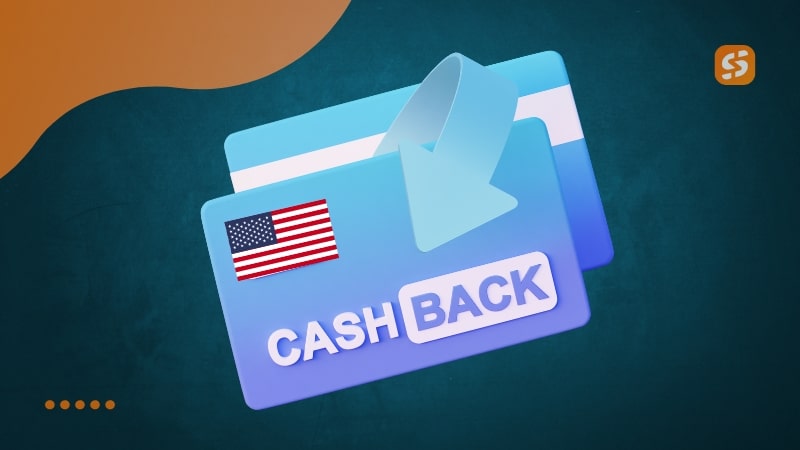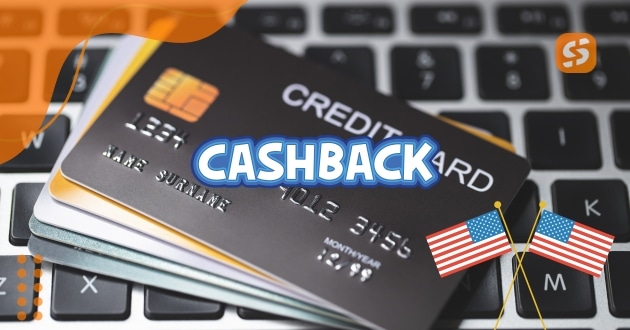Anúncios
Credit cards with cashback rewards have become one of the most popular financial tools for individuals looking to maximize their spending potential. In an age where financial literacy is crucial and consumers are increasingly savvy. These credit cards offer a simple yet effective way to earn rewards on everyday purchases. Whether you’re grabbing a cup of coffee, filling up your gas tank, or shopping for groceries, each purchase can help you earn money back.
But, as with any financial product, it’s important to understand how these cards work and how to use them effectively to reap the greatest rewards. In this guide, we’ll delve into the mechanics of cashback credit cards, their benefits, and the considerations you need to make when choosing the right one for your needs.
Cashback rewards have emerged as an appealing feature because they’re transparent and universally applicable. Unlike points or miles that can be restricted to specific categories or have expiration dates, cashback offers straightforward savings. Moreover, the flexibility of how rewards can be redeemed, whether as a statement credit, a check, or even through gift cards, adds to their allure.
What Are Cashback Credit Cards?
Cashback credit cards are financial products designed to reward cardholders with a percentage of their spending in the form of cash. When you use these cards for everyday purchases. The credit card issuer returns a portion of the amount spent as cashback.
Anúncios
Unlike other reward systems, such as travel points or miles, cashback offers direct and tangible financial benefits. The simplicity of this reward structure makes cashback credit cards an appealing choice for many consumers.
To elaborate, these cards are typically structured in a way that benefits the consumer through regular transactions. There are two main types of cashback structures:
- Flat-rate cashback: This type offers a fixed percentage back on all purchases, making it easy to understand and predict. For example, if a card provides 1.5% cashback, you earn 1.5% back on every dollar spent, no matter what category the purchase falls under.
- Tiered cashback: In contrast, tiered cards offer higher cashback rates on certain categories of spending. Such as groceries, dining, or travel. For example, you might earn 3% on groceries, 2% on gas, and 1% on all other purchases.
Some cards even have rotating categories that change every quarter, giving cardholders the opportunity to earn higher cashback percentages in specific areas. These categories often require activation, which can add a layer of complexity to managing the rewards.
Furthermore, it’s essential to note that many cashback credit cards come with added benefits. Such as purchase protection, extended warranties, and travel insurance. While these perks may vary between issuers, they can provide additional value beyond the basic cashback rewards.
In addition to the cashback features, some credit cards offer a Credit Card No Annual Fee option. This type of card is particularly attractive for individuals who want to enjoy cashback rewards without being burdened by an annual fee.
How Do Cashback Credit Cards Work?
Understanding the mechanics is essential before jumping into any financial product. Essentially, credit card companies share part of the transaction fees they charge merchants with you, the cardholder.

- Flat-rate cashback: A consistent percentage applies to every purchase, making it simple and predictable.
- Tiered categories: Certain spending categories, like groceries or fuel, yield higher percentages.
- Rotating categories: These cards offer bonus cashback on changing categories every quarter, often requiring activation.
Therefore, when selecting among credit cards with cashback rewards, it is crucial to evaluate which structure aligns best with your spending habits.
Why Cashback Credit Cards Are So Popular
The growing popularity of cashback credit cards is not surprising. They combine transparency, accessibility, and flexibility in a way that few other reward systems do.
First of all, people appreciate the universality of cashback. Unlike travel points, which may fluctuate in value or expire, cashback provides real savings applicable to almost any financial goal. In addition, cashback rewards can often be redeemed as statement credits, direct deposits, or gift cards. Giving consumers the freedom to decide how to use their earnings.
Moreover, during times of economic uncertainty, cashback acts as an immediate incentive, effectively reducing the cost of purchases.
Key Advantages of Cashback Credit Cards
There are several reasons why credit cards with cashback rewards stand out in the market:
- Simplicity and Transparency: Unlike complex points systems, cashback is straightforward. One dollar equals one dollar, and there is no hidden conversion rate.
- Flexibility of Redemption: You can choose between applying rewards toward your balance, depositing them into your bank account, or using them for other perks.
- Encouragement of Responsible Spending: When used wisely, cashback cards can help you budget and even save money on necessary purchases such as fuel, groceries, or utilities.
- No Expiration in Many Cases: Most cashback rewards do not expire, allowing cardholders to accumulate rewards at their own pace.
Potential Drawbacks You Should Consider
However, while appealing, cashback credit cards also come with potential downsides.
First, many cards charge high annual percentage rates (APRs). If you tend to carry a balance, the interest paid will quickly outweigh any cashback you earn. Second, some cards impose annual fees that can reduce net benefits unless you spend significantly.
Additionally, rotating categories and spending caps can make reward management complex. A 5% cashback category may sound attractive, but if the cap is $1,500 per quarter, the maximum reward is only $75 for that period.
Therefore, although credit cards with cashback rewards are powerful tools, they must be used responsibly to avoid becoming financial traps.
Strategies to Maximize Cashback Benefits
To get the most out of cashback cards, you should follow a few practical strategies.
- Focus on Your Spending Habits: If most of your expenses are on groceries and gas, a card that prioritizes these categories is ideal. Conversely, if your spending is diverse, a flat-rate card may serve you better.
- Use Multiple Cards Strategically: Some experienced users combine several cashback cards, assigning each to its highest reward category. This strategy requires discipline but can significantly boost total cashback earnings.
- Pay Balances in Full: The golden rule of using credit cards with cashback rewards is to avoid carrying balances. Interest charges quickly erode any benefit.
- Take Advantage of Signup Bonuses: Many cards offer welcome bonuses, such as $200 after spending $500 in the first three months. These incentives can dramatically increase your initial rewards.
Cashback Credit Cards vs. Other Reward Systems
To truly appreciate cashback cards, it helps to compare them with other reward systems.
- Travel Rewards: Best for frequent travelers, but redemption restrictions and fluctuating point values can be frustrating.
- Store Cards: Useful if you are loyal to one brand, but less flexible.
- Cashback Cards: Universal, easy to understand, and widely applicable.
Therefore, for the average consumer, cashback offers the most straightforward and versatile form of value.
Choosing the Right Cashback Credit Card
When evaluating credit cards with cashback rewards, consider several factors:
- Annual Fees: Is the fee justified by the rewards you expect to earn?
- Reward Structure: Does the card align with your everyday spending categories?
- Redemption Options: Can you redeem rewards in the way that benefits you most?
- Introductory Offers: Are there 0% APR periods or welcome bonuses?
- Other Perks: Consider extras such as purchase protection, extended warranties, or travel insurance.
By carefully analyzing these elements, you can select the card that maximizes both your short- and long-term financial goals.
The Psychology Behind Cashback Rewards
Interestingly, cashback cards also play on consumer psychology. Receiving rewards, even in small amounts, creates a sense of achievement. This motivates people to use their cards more frequently, which in turn benefits the banks.
However, this psychological effect can be double-edged. While it may encourage responsible spending for some, others may overspend just to earn more rewards. Recognizing this dynamic is vital to making cashback work in your favor.
Real-Life Scenarios
Consider Sarah, a young professional who spends around $2,000 per month on groceries, dining, and commuting. Using a flat-rate 2% cashback card, she earns $40 monthly, or nearly $500 per year. For her, this money can cover holiday shopping or contribute to savings.
Meanwhile, Daniel, a frequent traveler, might find a travel rewards card more beneficial, despite the appeal of cashback. This illustrates why personal spending patterns should always guide the decision.
Conclusion
In conclusion, credit cards with cashback rewards offer an excellent opportunity for consumers to maximize their spending power, turning everyday purchases into real savings.
These cards are simple, transparent, and flexible, making them a popular choice for anyone looking to earn cash back on groceries, dining, travel, and even bills.
The key to success with cashback cards lies in choosing the right one for your spending habits, paying your balance in full to avoid interest charges, and understanding the rewards structure, whether flat-rate, tiered, or rotating categories.
When used responsibly, cashback credit cards can provide tangible benefits, such as reducing the overall cost of your purchases, offering statement credits, or even allowing you to save for special occasions.
However, as with any financial product, it’s crucial to read the fine print and be aware of any potential fees or limitations that could offset your rewards. Keep in mind that some of the best cashback cards are available with no annual fee, making them accessible to a broader range of consumers.
If you’re ready to explore the world of cashback rewards and find the card that fits your financial goals, take the time to compare various options and consider factors such as reward rates, redemption options, and additional perks.
One such card that consistently receives positive reviews is the Chase Freedom Unlimited, which offers 1.5% cashback on every purchase, a $200 bonus after spending $500 in the first three months, and no annual fee.
Ultimately, the right cashback credit card can be a valuable tool in your financial arsenal, allowing you to earn rewards effortlessly while managing your expenses wisely. So, whether you’re new to cashback cards or looking to optimize your current rewards, there’s a suitable option out there for you.



















